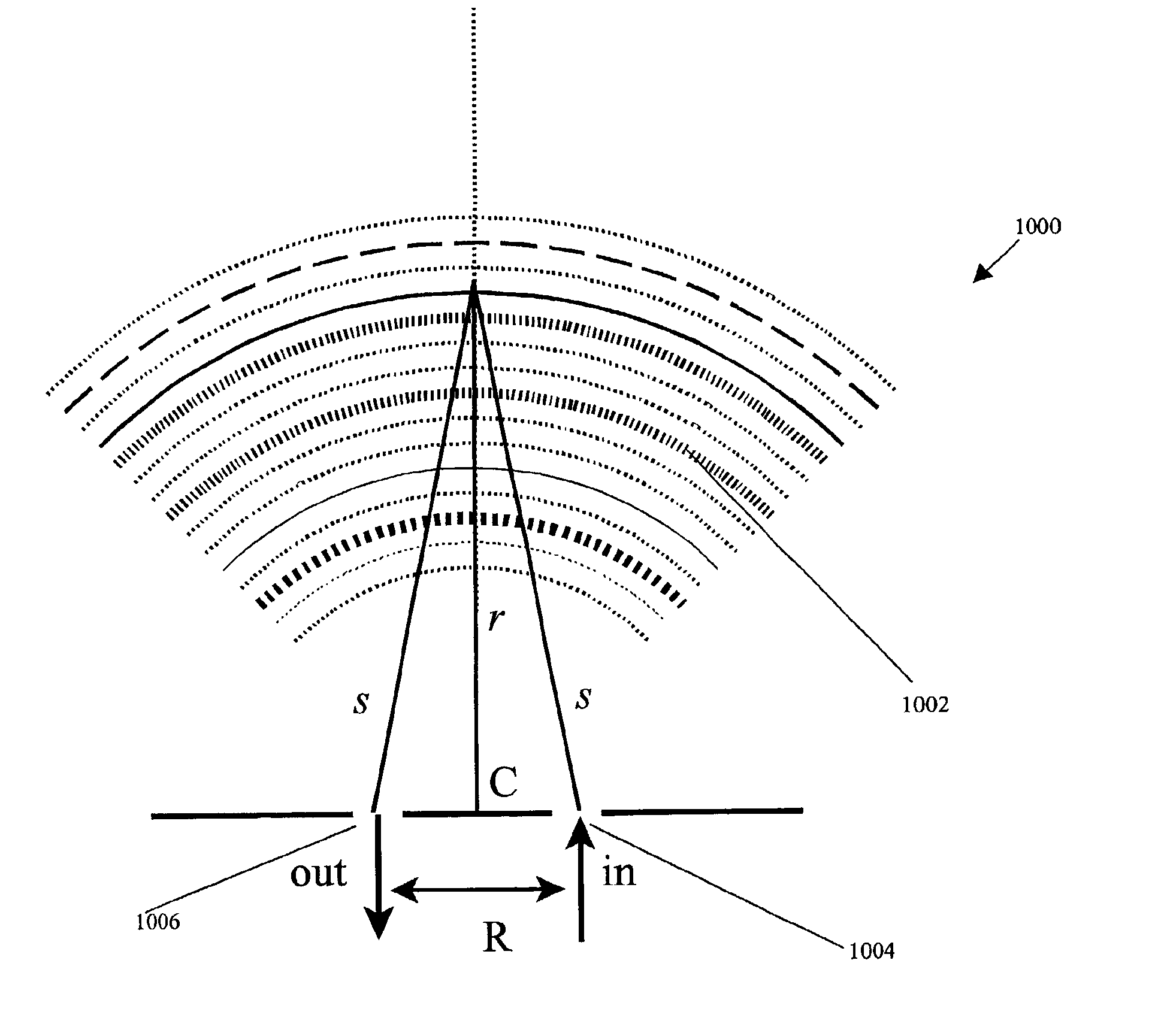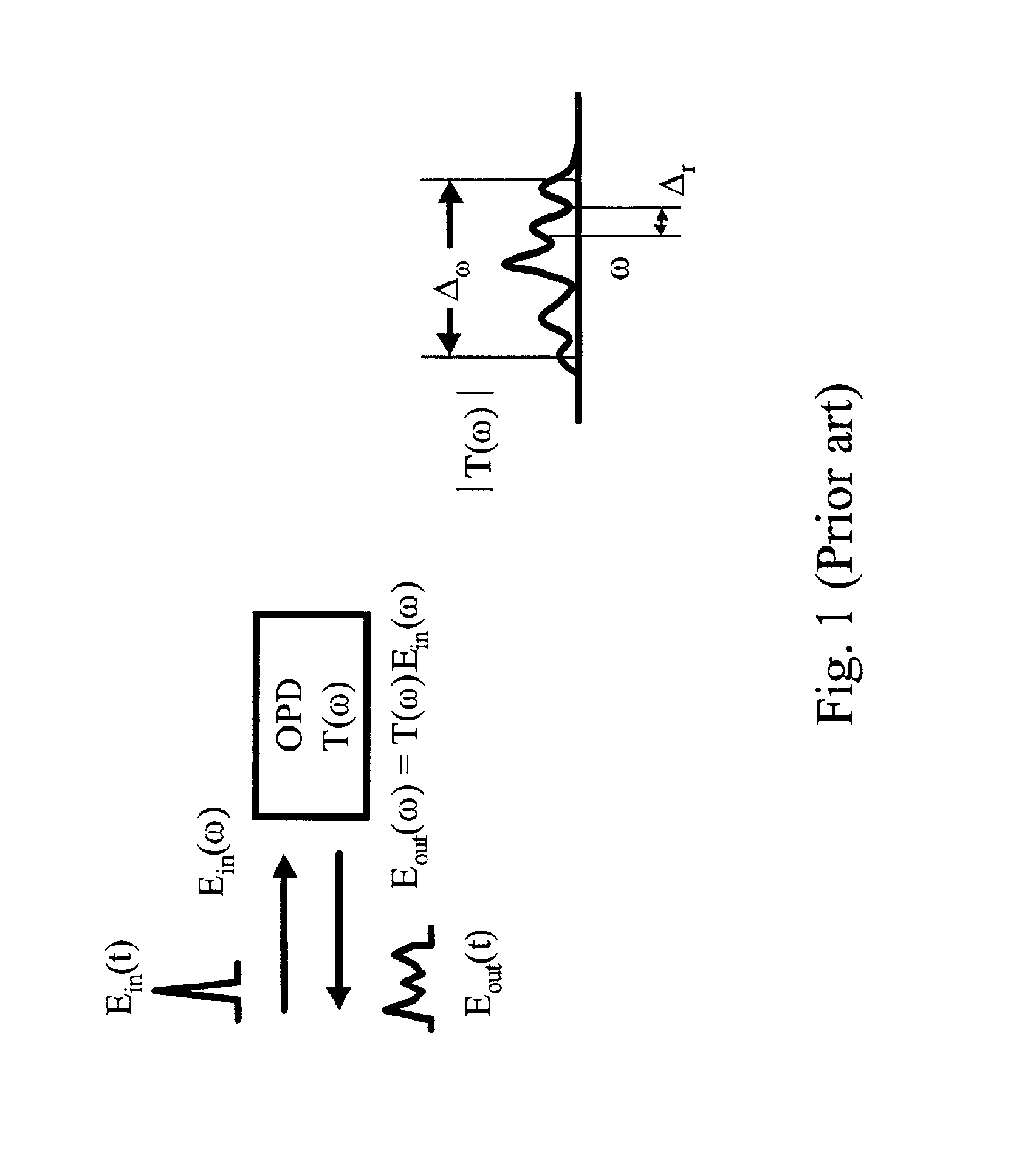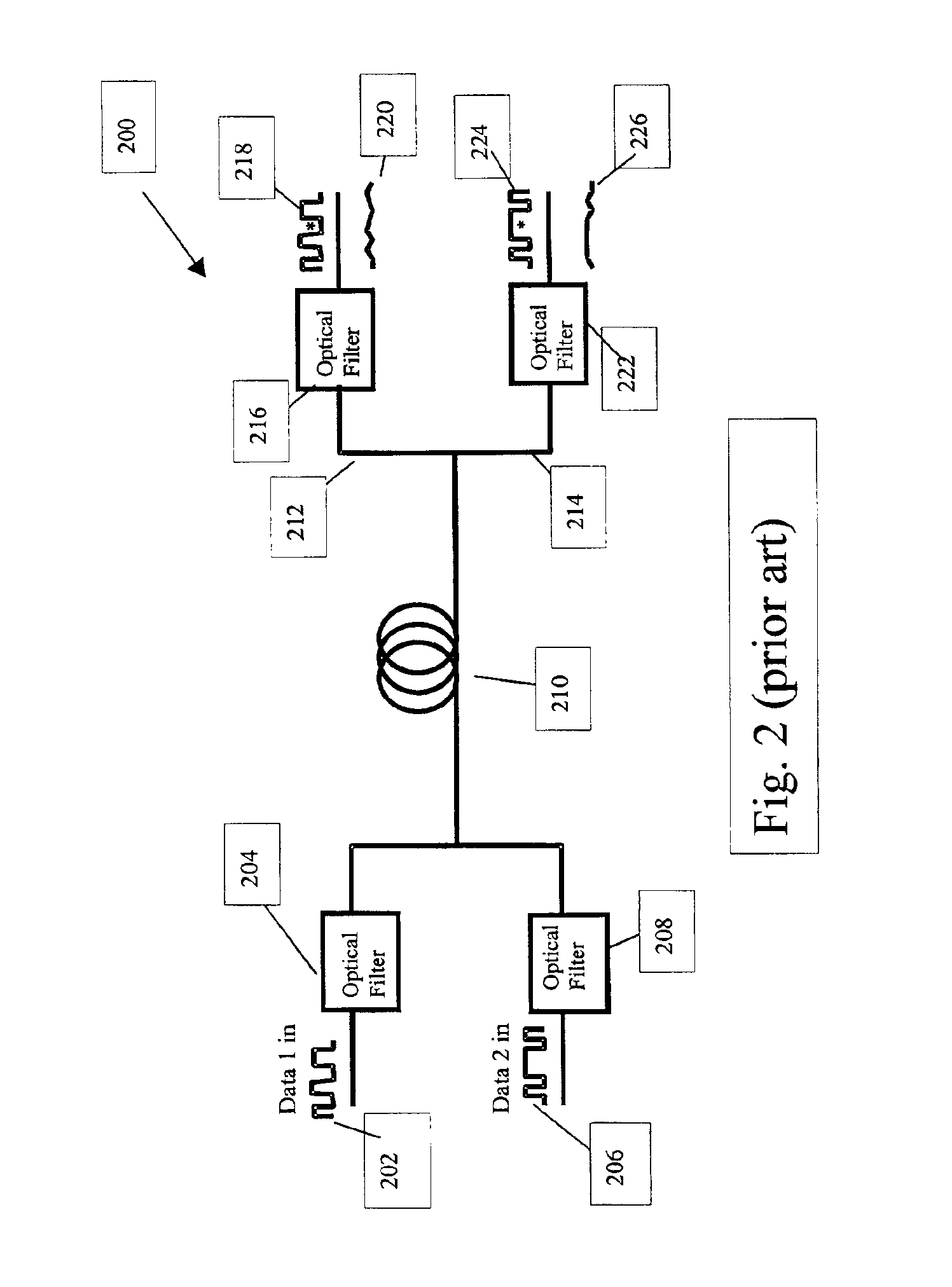Holographic spectral filter
a holographic and spectral filter technology, applied in the field of optical signal processing, can solve the problems of lack of flexibility, high cost, and inability to apply widely
- Summary
- Abstract
- Description
- Claims
- Application Information
AI Technical Summary
Benefits of technology
Problems solved by technology
Method used
Image
Examples
Embodiment Construction
The present invention contemplates a new class of spectral filtering devices, which we refer to as programmed holographic spectral filtering devices, or more simply and interchangeably as programmed holographic devices or programmed holographic processors. These spectral filtering devices are free of the shortfalls of previous spectral filtering devices, and yet provide low cost, high performance functionality. Programmed holographic devices comprise volume holograms in substrates that may comprise planar waveguides, bulk materials, or other substrates, whose diffractive elements have spatial variations in amplitude, optical spacing, or spatial phase, whose detailed form dictates the transfer function produced by the device. A volume hologram is a diffractive structure operative to generate output optical signals in response to input optical signals, wherein each portion of the wavefront of the input signal contributes to the output signal by scattering from the diffractive structur...
PUM
 Login to View More
Login to View More Abstract
Description
Claims
Application Information
 Login to View More
Login to View More - R&D
- Intellectual Property
- Life Sciences
- Materials
- Tech Scout
- Unparalleled Data Quality
- Higher Quality Content
- 60% Fewer Hallucinations
Browse by: Latest US Patents, China's latest patents, Technical Efficacy Thesaurus, Application Domain, Technology Topic, Popular Technical Reports.
© 2025 PatSnap. All rights reserved.Legal|Privacy policy|Modern Slavery Act Transparency Statement|Sitemap|About US| Contact US: help@patsnap.com



